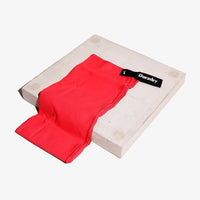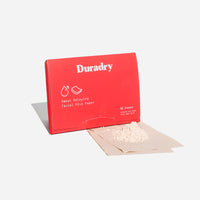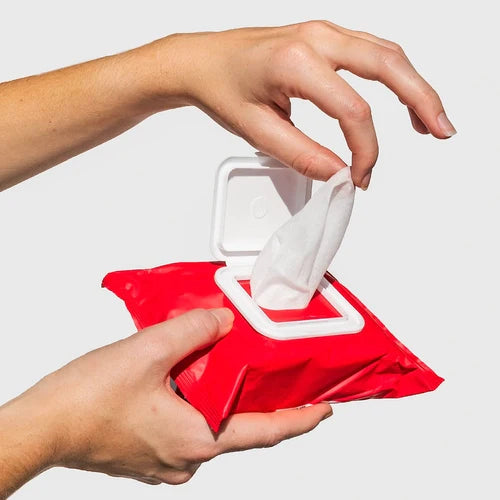Have you ever had that itching, burning feeling on your skin? It might be heat hives! Known also as "thrush", these bumps on the skin are the result of an allergic reaction. Although heat hives can occur at any time, they're most common in the hot weather. What's more, heat hives can be incredibly frustrating - because there's no surefire way to know when or how they'll flare up.
What are heat hives?
Heat hives can be a frustrating skin condition that causes intense itching and skin redness. It is a reaction that results in tiny hives surrounded by large patches of red skin. They’re related to an increase in your body temperature.
You can get itchy red hives on your skin for lots of reasons. Some evidence suggests it may be due to the nervous system or from an allergic response to sweat. You may be more likely to get these hives if you have eczema, asthma, or other allergies like hay fever, or if you get hives for other reasons, such as from certain foods or medications, pressure on your skin, or cold weather.
Heat hives can occur in any area of the body, but are particularly common on the arms, legs, and neck.
Heat rash vs. chronic hives
When it comes to skin conditions, heat rash vs. chronic hives can be a bit confusing. So, here's a quick overview of the key differences:
- Heat rash is a temporary skin condition that results from excessive exposure to the sun or heat. Occurs when perspiration is trapped under your skin by blocked pores.
- Chronic hives, on the other hand, is a long-term skin condition that arises due to an underlying medical condition like allergies.
Although both conditions can cause a rash, the causes and the appearance of the rash are very different. Prickly heat or heat rash causes a rash with small red spots as a result of blocked sweat glands. While heat hives are rather red bumps that may burn or sting surrounded by large patches of red skin.
Causes and symptoms of heat hives
If you're ever feeling hot and itchy, don't hesitate to consult a doctor. Heat hives, formally known as urticaria, are a type of skin rash that is caused by exposure to heat and sweat. They can be painful and it can be difficult to treat them.
A 2014 study on cholinergic urticaria of 92 males in Korea identified several aggravating factors for the condition: hot or spicy foods and stress.
The symptoms of heat hives are similar to hives caused by other triggers: red, tingly, itchy welts that are usually small (1-3 millimeter) red bumps with flares or circles around them.
You can get them anywhere on your body, but most of the time they show up on your chest, face, upper back, and arms. Sometimes, the bumps are close together. Your skin can look swollen and blotchy, or you may just look flushed.
It's not common, but you also may have one or more of these along with hives:
- Extra saliva in your mouth
- Lightheadedness
- Low blood pressure
- Rapid heartbeat
- Shortness of breath
- Stomach cramps.
How to treat heat hives
If you live in a hot climate or like to exercise, it can be hard to stay away from the heat that causes these hives. If you are experiencing heat hives, the best way to treat them is by applying a cold pack or taking over the counter medications. If the hives are severe, you may need to go to a doctor for further treatment.
Prescription medications
From the symptoms of heat hives to how to best treat them, here are some essential talking points about prescription medications for heat hives.
1. The goal of treating heat hives is generally twofold - relieving symptoms and preventing them from recurring. Medications can help achieve both these goals in a number of ways.
2. There are several types of medication that can be used to treat heat hives, each with its own set of benefits and risks associated with it. It is important to follow the instructions carefully prescribed by your doctor and only take the drug as directed - side effects may occur if you take it incorrectly or exceed dosage limits recommended by your doctor..
3. If you experience any adverse side effects while taking a medication for heat-hives treatment, it is advised to stop taking it immediately and see a dermatologist who will be able to provide further advice on how best address the issue(s).
Antihistamines
Antihistamines, used to treat allergies, may help control heat hives.
You doctor might recommen Cetirizine (Zyrtec), Diphenhydramine (Benadryl), Fexofenadine (Allegra), Loratadine (Alavert, Claritin), Hydroxyzine (Atarax, Vistaril).
If antihistamines don't work, your doctor may recommend steroids for a short time or histamine 2 receptor blockers such as Zantac or Tagamet. All antihistamines are more effective if taken daily rather than on an as-needed basis.
Home Remedies
Home remedies include aloe vera, calamine lotion, and an oatmeal bath. These can soothe your skin, reduce swelling and symptoms.
Prior to topical applications of this sort, check the ingredients to make sure that you aren’t allergic to any of them.
Eliminate hive-inducing triggers
There are a number of triggers that can cause heat hives, and it's important to identify and eliminate them as soon as possible. Some of the most common include: spicy food, stress, wearing tight clothes or sitting in a drafty room, all of which increase exposure to heat.
Avoid hot showers
If you suffer from heat hives, it's important to avoid hot showers. The temperature will help soothe the skin and reduce the itching and swelling that can occur.
To treat heat hives, apply a cold compress or icepack as needed. In addition, keep stress levels low and eat a healthy diet that includes plenty of vitamins A, C and E.
Most instances of heat hives can be treated at home and eventually fade on their own. However, you should seek immediate medical attention if swelling occurs in your throat that makes it difficult to breath.









